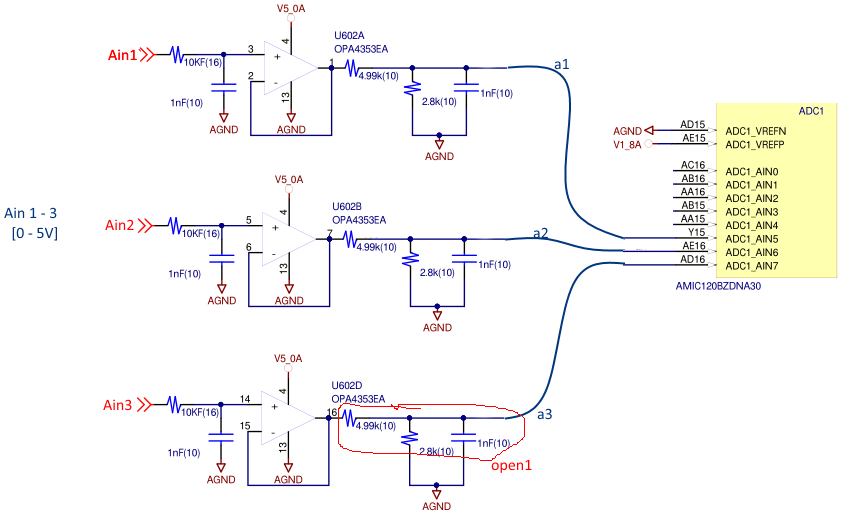Hi,
Customers experienced ADC issues while using AMIC120.
AMIC120 continued to be produced.
However, the 5 newly built boards have problems with ADC operation.
The existing S/W has not been changed.
Customer measured resistance value of pin after AMIC120 was disconnected.
1. Low resistance between ADC1_AIN6(AE16) pin and ADC1_AIN7(AD16) pin.
2. When measuring the resistance between the ADC1_AIN5(Y15) pin and the ADC1_AIN6(AE16) pin, the resistance is measured in open state. (more than 5MΩ)
3. The resistance value between ADC1_AIN6(AE16) pin and ADC1_AIN7(AD16) pin is measured as low as approximately 12k.
Q1. If the resistance value is not normal, what is the problem?
Q2. Please check if there is a possibility that the low measurement is a faulty component.
Top marking


